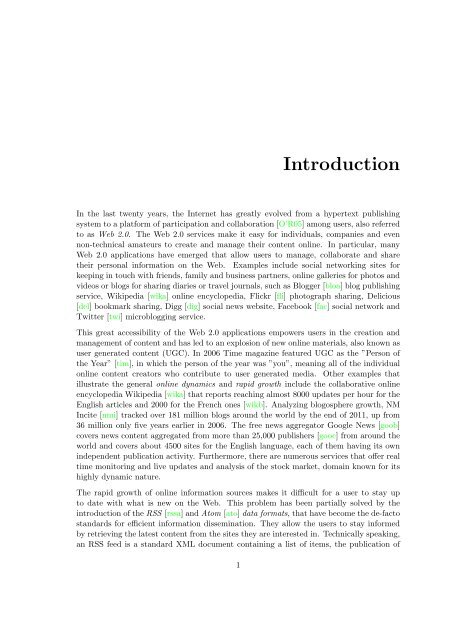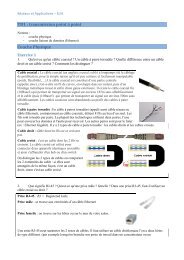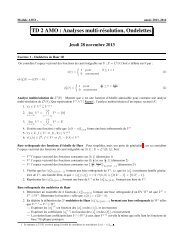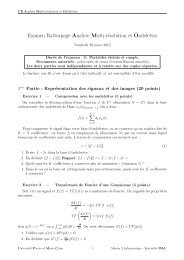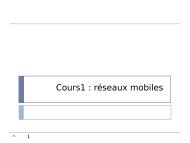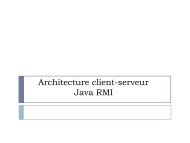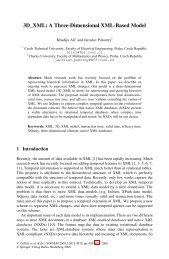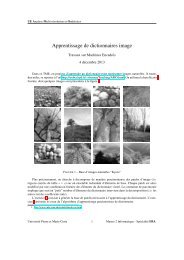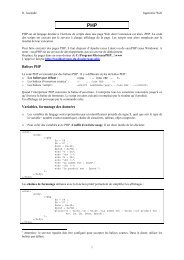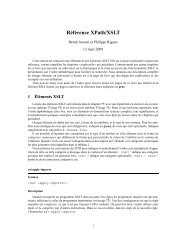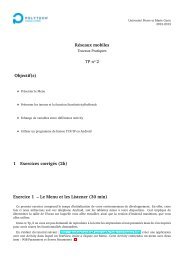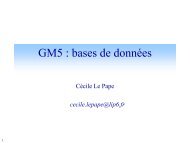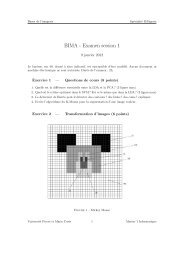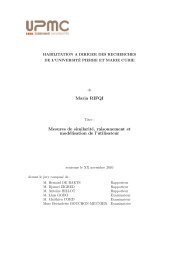Roxana - Gabriela HORINCAR Refresh Strategies and Online ... - LIP6
Roxana - Gabriela HORINCAR Refresh Strategies and Online ... - LIP6
Roxana - Gabriela HORINCAR Refresh Strategies and Online ... - LIP6
Create successful ePaper yourself
Turn your PDF publications into a flip-book with our unique Google optimized e-Paper software.
Introduction<br />
In the last twenty years, the Internet has greatly evolved from a hypertext publishing<br />
system to a platform of participation <strong>and</strong> collaboration [O’R05] among users, also referred<br />
to as Web 2.0. The Web 2.0 services make it easy for individuals, companies <strong>and</strong> even<br />
non-technical amateurs to create <strong>and</strong> manage their content online. In particular, many<br />
Web 2.0 applications have emerged that allow users to manage, collaborate <strong>and</strong> share<br />
their personal information on the Web. Examples include social networking sites for<br />
keeping in touch with friends, family <strong>and</strong> business partners, online galleries for photos <strong>and</strong><br />
videos or blogs for sharing diaries or travel journals, such as Blogger [bloa] blog publishing<br />
service, Wikipedia [wika] online encyclopedia, Flickr [fli] photograph sharing, Delicious<br />
[del] bookmark sharing, Digg [dig] social news website, Facebook [fac] social network <strong>and</strong><br />
Twitter [twi] microblogging service.<br />
This great accessibility of the Web 2.0 applications empowers users in the creation <strong>and</strong><br />
management of content <strong>and</strong> has led to an explosion of new online materials, also known as<br />
user generated content (UGC). In 2006 Time magazine featured UGC as the ”Person of<br />
the Year” [tim], in which the person of the year was ”you”, meaning all of the individual<br />
online content creators who contribute to user generated media. Other examples that<br />
illustrate the general online dynamics <strong>and</strong> rapid growth include the collaborative online<br />
encyclopedia Wikipedia [wika] that reports reaching almost 8000 updates per hour for the<br />
English articles <strong>and</strong> 2000 for the French ones [wikb]. Analyzing blogosphere growth, NM<br />
Incite [nmi] tracked over 181 million blogs around the world by the end of 2011, up from<br />
36 million only five years earlier in 2006. The free news aggregator Google News [goob]<br />
covers news content aggregated from more than 25,000 publishers [gooc] from around the<br />
world <strong>and</strong> covers about 4500 sites for the English language, each of them having its own<br />
independent publication activity. Furthermore, there are numerous services that offer real<br />
time monitoring <strong>and</strong> live updates <strong>and</strong> analysis of the stock market, domain known for its<br />
highly dynamic nature.<br />
The rapid growth of online information sources makes it difficult for a user to stay up<br />
to date with what is new on the Web. This problem has been partially solved by the<br />
introduction of the RSS [rssa] <strong>and</strong> Atom [ato] data formats, that have become the de-facto<br />
st<strong>and</strong>ards for efficient information dissemination. They allow the users to stay informed<br />
by retrieving the latest content from the sites they are interested in. Technically speaking,<br />
an RSS feed is a st<strong>and</strong>ard XML document containing a list of items, the publication of<br />
1


